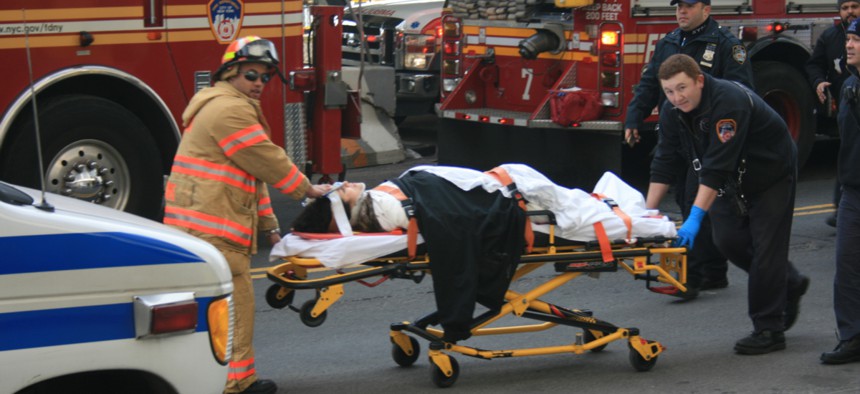DHS Wants Industry Input on How First Responders Should Wear Their Tech

Christopher Penler/Shutterstock.com
Wearables are great—but they can't get in the way when firefighters and paramedics do their jobs.
The Homeland Security Department wants industry to weigh in on the agency’s strategy for tethering cameras, sensors and other tech tools to first responders to boost their safety and effectiveness in the line of duty.
The DHS Science and Technology Directorate in February began asking for industry feedback on its Next Generation First Responder Integration Handbook, a blueprint for connecting the array of devices used by rescue workers into a single wearable apparatus.
The guidance come as part of the agency’s broader Next Generation First Responder initiative, which aims to keep firefighters, paramedics and other first responders better protected and connected with emerging technology.
“Responders are often overburdened with data and stand-alone devices that may not communicate seamlessly with other devices to sufficiently aid in completing their mission,” said Program Manager Norman Speicher. “Responders need smarter technologies that increase their ability to focus on saving lives and protecting our communities.”
The department’s solution to the cumbersome technology toolkit is the Responder SmartHub, a network of sensors, cameras and communications devices all linked to a central control. The wearable control hub would connect to devices via Wi-Fi, Bluetooth or other networks and transmit data to external displays worn by responders as well as any command centers involved in rescue efforts.
The handbook includes minimum specifications and applications for each module—communications systems, sensors, input/output devices and the central hub. Modules are required to be interchangeable, easily removable and capable of running for at least half an hour without any external power source, according to the document.
“Integrating new capabilities with existing technology investments is critical to adoption,” S&T wrote in the guidebook. “Interoperability is therefore essential to make sure both new and legacy technologies can support first responder missions without distracting them from their operational priorities.”
Using open standards and scalable systems, the “plug and play” system lets rescue workers pick and choose the tools they need for a given mission and connect them together with little more than a username and password. In other words, connecting first responders to their thermal sensors, radiation detectors and wearable displays would look a lot like hooking a phone up to a Bluetooth speaker.
The request for comment comes as DHS prepares for the Harris County Operational Experimentation, a five-day event that will give groups a chance to prove their technology’s worth in improving safety and effectiveness in a mock disaster situation. S&T will allow industry to submit additional comments on the guidebook twice a year on a rolling basis, the agency said in a statement.






